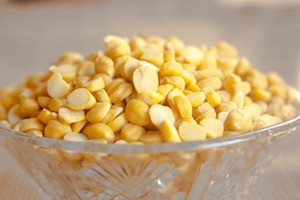Healthy food trends — beans and legumes
Legumes are large, fleshy, colorful plant seeds. Beans, peas, and lentils are all types of legumes. Vegetables such as beans and other legumes are an important source of protein. They are a key food in healthy diets and have many benefits.
 Beans, lentils, and peas come in many options, cost little money, and are easy to find. Check your supermarket aisles and you’ll find dozens of dried and canned varieties. Perfect food for your emergency SHTF supplies.
Beans, lentils, and peas come in many options, cost little money, and are easy to find. Check your supermarket aisles and you’ll find dozens of dried and canned varieties. Perfect food for your emergency SHTF supplies.
Soft and earthy-flavored, legumes can be eaten in many ways.
My favorites are lentils. Did you know that lentils contain more protein than beef? And that they are packed with fiber, along with magnesium, iron, zinc, B6, and more potassium than a banana. Lentils are also easy to store and keep really well for a long time. As a vegetarian alternative they are difficult to beat as you can make them into chills and burgers and keep up your protein levels. If you are on a weight reducing diet, they make a good alternate to meat as the fiber keeps your stomach fuller for up to four hours longer than other food groups.
If you’ve heard bad things about lentils it’s that they contain phytic acid and lectin, both of which are considered anti nutrients, compounds that prevent the body from absorbing essential vitamins and minerals, but the great news is that cooking lentils actually releases their full nutritional potential and deactivates the lectin.
Types of legumes
Beans:
- Adzuki
- Black beans
- Black-eyed peas (actually a bean)
- Cannellini
- Cranberry
- Garbanzo (chick peas)
- Great Northern
- Kidney
- Lima
- Mung
- Navy
- Pinto
Other legumes:
- Lentils
- Peas
- Soy beans (edamame)
Why they are good for you
Beans and legumes are rich in plant protein, fiber, B-vitamins, iron, folate, calcium, potassium, phosphorus, and zinc. Most beans are also low in fat.
Legumes are similar to meat in nutrients, but with lower iron levels and no animal fats. The high protein and other nutrients in legumes make them a great option in place of meat and dairy products. Vegetarians often substitute legumes for meat.
Legumes are a great source of fiber and help you have regular bowel movements. Just 1 cup of cooked black beans will give you 15 grams of fiber, which is about half of the recommended daily amount.
Legumes are packed with nutrients. They are low in calories, but make you feel full. They are wonderful for people with diabetes since they do not increase your blood sugar very much. The body uses the carbohydrates in legumes slowly, over time, providing steady energy for the body, brain, and nervous system. Eating more legumes as part of a healthy diet can help lower blood sugar, blood pressure, heart rate, and other heart disease and diabetes risks.
Beans and legumes contain antioxidants that help prevent cell damage and fight disease and aging. The fiber and other nutrients benefit the digestive system, and may even help to prevent digestive cancers.
How they are prepared
Legumes can be added to any meal, for breakfast, lunch, or dinner. Once cooked, they can be eaten warm or cold.
Most dry beans (except peas and lentils) will need to be rinsed, soaked, and cooked.
- Rinse beans in cold water and pick out any pebbles or stems.
- Cover the beans with 3 times their amount in water.
- Soak for 6 hours.
You can also bring dried beans to a boil, take the pan off the burner, and let them soak for 2 hours. Soaking overnight or after boiling makes them less likely to give you gas.
To cook your beans:
- Drain and add fresh water.
- Cook the beans according to the instructions on your package.
To add cooked or canned beans to your diet:
- Add them to salsas, soups, salads, tacos, burritos, chili, or pasta dishes.
- Include them as a side dish at breakfast, lunch, or dinner.
- Mash them up for dips and spreads.
- Use bean flour to bake them.
To reduce the gas caused by eating beans:
- Always soak dried beans.
- If you don’t eat a lot of beans, gradually add them to your diet. This helps your body get used to the extra fiber.
- Chew them well.
Where to find legumes
Legumes may be purchased at any grocery store or online. They do not cost a lot of money and can be stored for a very long time. They come in bags (dried beans), cans (already cooked), or jars.
Recipe
Ingredients
- 2 cans black beans (15 oz.)
- ½ medium onion
- 2 garlic cloves
- 2 tablespoons vegetable oil
- ½ teaspoon cumin (ground)
- ½ teaspoon salt
- ¼ teaspoon oregano (fresh or dried)
Instructions
- Carefully drain the juice from one can of black beans. Pour the drained black beans into a bowl. Use a potato masher to mash the beans until they are no longer whole. Set the mashed beans aside.
- Chop the onion into ¼-inch pieces. Set the onions aside.
- Peel the garlic cloves and mince them finely. Set the garlic aside.
- In a medium sauce pan, heat your cooking oil over medium high heat. Add the onions and sauté for 1 to 2 minutes.
- Stir in the garlic and cumin and cook for 30 seconds more.
- Stir in the mashed black beans and the second can of black beans, including the juice.
- When the beans begin to boil, reduce the heat to low, stir in the salt and oregano and simmer for 10 minutes, uncovered.
Source: United States Department of Agriculture

